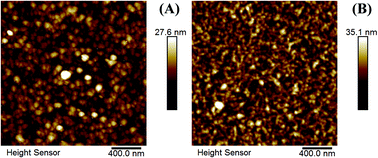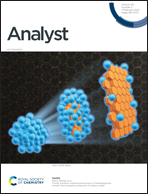Intramolecular photoinitiator induced atom transfer radical polymerization for electrochemical DNA detection†
Abstract
A novel electrochemical biosensor was reported for the first time to achieve highly sensitive DNA detection based on photoinduced atom transfer radical polymerization (photoATRP). In this work, PNA was applied as the capture probe to specifically recognize the target DNA (TDNA), and we utilized lung cancer DNA as TDNA. The ATRP initiator was introduced to the electrode surface via phosphate-Zr4+-carboxylate chemistry. PhotoATRP was activated under blue light irradiation based on a photoinitiator I2959, which produced free radicals via homolytic cleavage. Subsequently, Cu2+ was reduced to Cu+ with the assistance of the free radicals, and numerous electroactive probes were grafted onto the electrode surface. Under optimal conditions, the limit of detection (LOD) of this method was 3.16 fM (S/N = 3, R2 = 0.992), and the linear range was from 10 fM to 1.0 nM. More importantly, the preparation process of this biosensor was simple and less laborious with a low background signal, suggesting good potential in practical applications.



 Please wait while we load your content...
Please wait while we load your content...